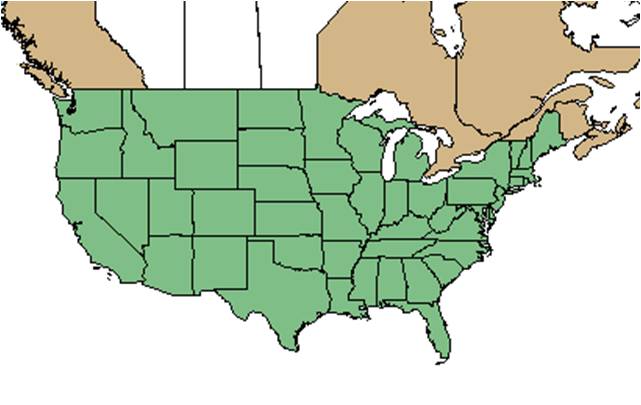Difference between revisions of "Lepidium virginicum"
KatieMccoy (talk | contribs) |
KatieMccoy (talk | contribs) (→References and notes) |
||
| Line 55: | Line 55: | ||
==References and notes== | ==References and notes== | ||
Deyrup, M.A. and N.D. 2015. Database of observations of Hymenoptera visitations to flowers of plants on Archbold Biological Station, Florida, USA. | Deyrup, M.A. and N.D. 2015. Database of observations of Hymenoptera visitations to flowers of plants on Archbold Biological Station, Florida, USA. | ||
| + | |||
| + | Florida State University Robert K. Godfrey Herbarium database. URL: [http://herbarium.bio.fsu.edu http://herbarium.bio.fsu.edu]. Last accessed: Collectors: States and Counties: Compiled by Tall Timbers Research Station and Land Conservancy. | ||
Revision as of 18:43, 12 November 2015
| Lepidium virginicum | |
|---|---|
Error creating thumbnail: Unable to save thumbnail to destination
| |
| Scientific classification | |
| Kingdom: | Plantae |
| Division: | Magnoliophyta - Flowering plants |
| Class: | Magnoliopsida – Dicotyledons |
| Order: | Capparales |
| Family: | Brassicaceae ⁄ Cruciferae |
| Genus: | virginicum |
| Species: | L. virginicum |
| Binomial name | |
| Lepidium virginicum L. | |

| |
| Natural range of Lepidium virginicum from USDA NRCS Plants Database. | |
Common name: Virginia pepperweed
Contents
Taxonomic notes
Description
A description of Lepidium virginicum is provided in The Flora of North America.
Distribution
Ecology
Habitat
Lepidium virginicum can occur along river shores, river floodplains, marshy salt flats bordering mangrove swamps, and sandy flats and shores of shallow lakes. It has been found to occur in disturbed areas such as roadsides, vacant lots, sandy fallow fields, and lawns (FSU Herbarium). Soils include loamy sand and sandy loam (FSU Herbarium).
Phenology
Flowers and fruits February through November (FSU Herbarium).
Seed dispersal
Seed bank and germination
Fire ecology
Pollination
The following Hymenoptera families and species were observed visiting flowers of Lepidium virginicum at Archbold Biological Station (Deyrup 2015):
Colletidae: Colletes mandibularis
Halictidae: Augochlorella gratiosa
Megachilidae: Heriades leavitti
Sphecidae: Ectemnius rufipes ais, Oxybelus laetus fulvipes, Tachysphex similis
Vespidae: Stenodynerus fundatiformis
Use by animals
Diseases and parasites
Conservation and Management
Cultivation and restoration
Photo Gallery
References and notes
Deyrup, M.A. and N.D. 2015. Database of observations of Hymenoptera visitations to flowers of plants on Archbold Biological Station, Florida, USA.
Florida State University Robert K. Godfrey Herbarium database. URL: http://herbarium.bio.fsu.edu. Last accessed: Collectors: States and Counties: Compiled by Tall Timbers Research Station and Land Conservancy.